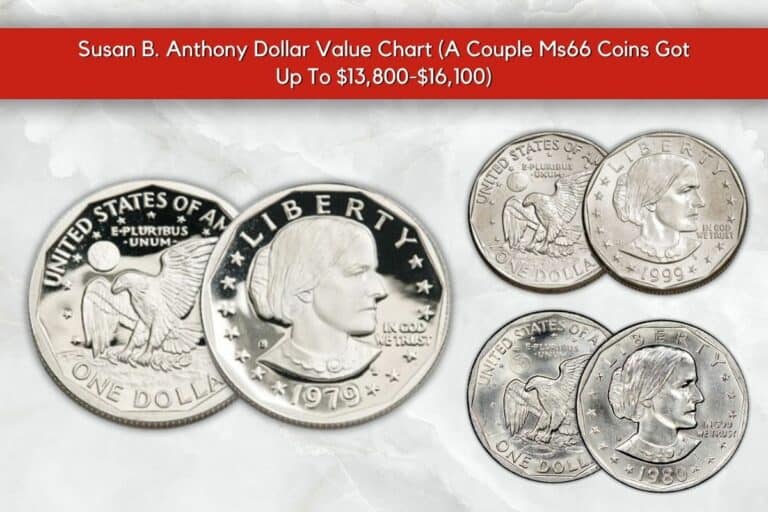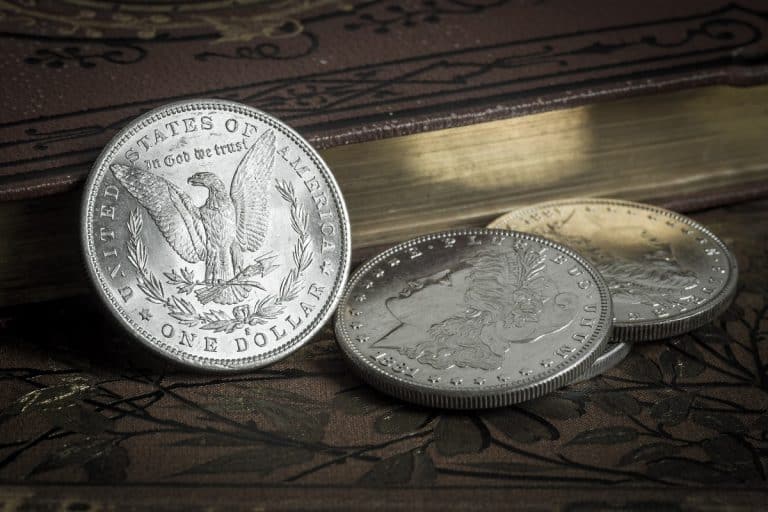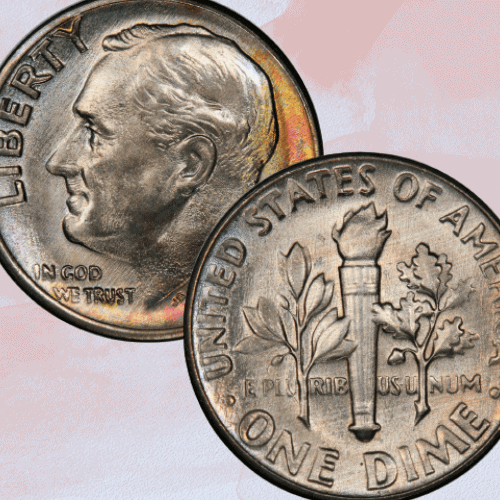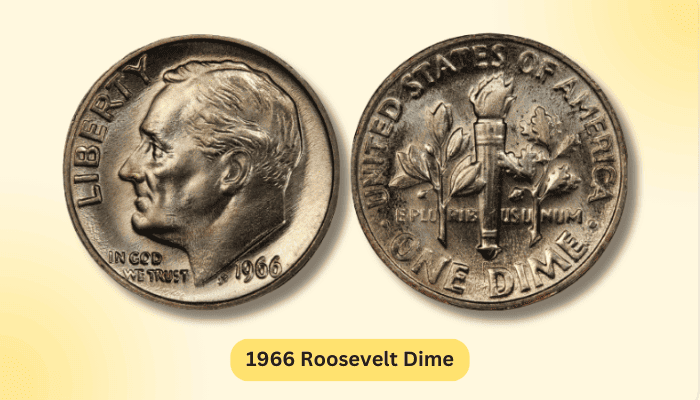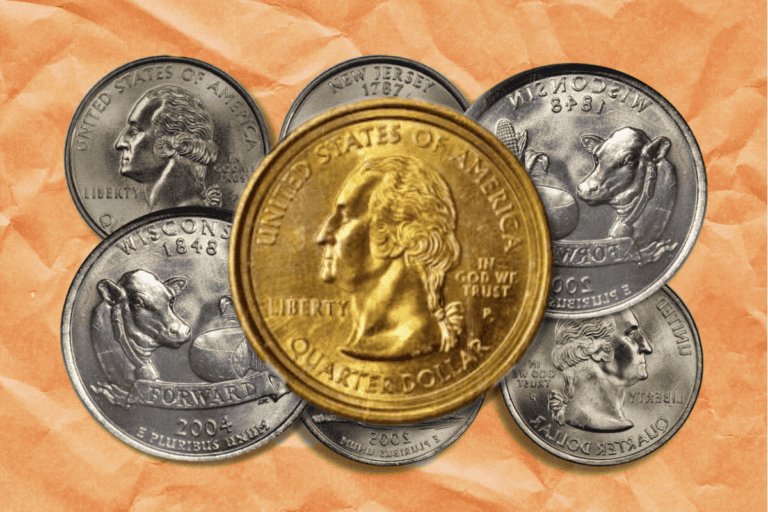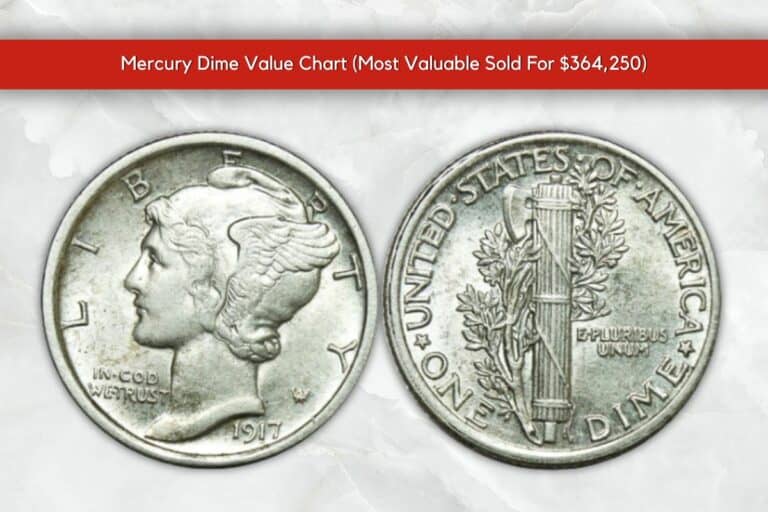Collecting coins can be a fun and rewarding hobby, but it can also be a great investment. Coins represent a tangible piece of history that you can hold in your hand, and they can be worth a lot of money. Franklin half dollars are some of the most collectible coins out there, and they can be worth a great deal of money.
Franklin half dollars were minted from 1948 to 1963, and they were the first American coin to feature a President on the obverse side. The coins were minted in 90% silver and ten percent copper, and they are considered to be very beautiful coins. Many people enjoy collecting these coins because of their history and their beauty.
Franklin half dollars can be worth a great deal of money, but they are not easy to find. The coins were minted in very small numbers, and many of them were melted down for their silver content. As a result, Franklin half dollars are very rare, and they can be worth a great deal of money.
In this article, you are going to learn everything you need to know about Franklin half dollars. You will learn about the history of the coin, how much they are worth, and where you can find them.
The History of the Franklin Series
The Franklin half dollar was minted from 1948 to 1963. The coin was created to commemorate Benjamin Franklin, one of the most important figures in American history. Franklin was a scientist, inventor, diplomat, and one of the Founding Fathers of the United States.
The Franklin half dollar was the first American coin to feature a President on the obverse side, and it was also the last silver coin to be minted for circulation. The obverse side of the coin features a portrait of Benjamin Franklin, and the reverse side features the Liberty Bell. The coins were designed by John R. Sinnock and John Frederick Lewis, two of the most important coin designers of the 20th century. The coins were minted at all major mints, including the Philadelphia Mint, Denver Mint, and San Francisco Mint.
There are 2 types of franklin coins: regular strike and proof coins. Regular strike coins are the coins that were minted for daily use, while proof coins are the coins that were specially made for collectors. Proof coins are usually made with a higher quality of metal, and they have a different finish.
A way to distinguish proof from regular strike coins is the coin’s color. Proof coins are usually brighter and have a higher level of detail. You can also tell proof coins apart by looking at the ‘S’ mint mark.
Proof coins are worth more than regular strike coins because they
Fun fact: Proof Franklin collectors started being minted in 1950, 2 years later than regular strike coins. They were made until 1963 when the series ended. The proof Franklin mintages are much lower than regular strikes with the exception of a few years. 1953 is an example of a year where there was a higher mintage for proofs than regular strikes because production had doubled to meet collector demand.
Estimating the Value of Franklin Half Dollars
Franklin half dollars can be worth a great deal of money, but the value of the coin depends on a few factors. The most important factor is the condition of the coin. Franklin half dollars that are in good condition are worth more than coins that are in poor condition. Another important factor is the date and mint mark of the coin. Coins that were minted in Philadelphia are worth more than coins that were minted in other mints.
There are four main criteria that you should use to evaluate an uncirculated coin: strike, surface preservation, luster, and eye appeal.
- Strike: The strike of a coin is how well the design was struck onto the surface of the coin. Coins with a good strike will have all of the detail of the design, while coins with a poor strike will be missing some detail.
- Surface Preservation: The surface preservation of a coin is how well the surfaces of the coin have been preserved. Coins with good surface preservation will have few scratches and no major blemishes, while coins with poor surface preservation will have many scratches and major blemishes.
- Luster: The luster of a coin is how shiny the surfaces of the coin are. Coins with good luster will be very shiny, while coins with poor luster will be dull.
- Eye Appeal: The eye appeal of a coin is how attractive the coin is to look at. Coins with good eye appeal will be pleasing to look at, while coins with poor eye appeal will be unappealing.
Keep in mind that these four criteria are just guidelines. You should use your own judgment when evaluating a coin.
The value of a Franklin half dollar also depends on whether it is a regular strike coin or a proof coin. Proof coins are usually worth more than regular strike coins. The value of the coin also depends on its rarity. Coins that are rare are worth more than coins that are not rare.
Here’s a video to watch if you want to learn more about the value of Franklin half dollars:
Here’s a grading chart to help you estimate the value of your coin. You’ll see a description of the condition of the coin, and learn how to better assess your coin’s condition.
- Poor: Franklin half dollars in Poor condition are heavily worn and lack any detail. These coins are often very dark, and they may be missing pieces.
- Fair: Franklin half dollars in Fair condition show moderate wear. The coin will have some detail remaining, but it will be very difficult to see.
- Good: Franklin half dollars in Good condition show light to moderate wear. The coin will have some detail remaining, and it will be easy to see.
- Very Good: Franklin half dollars in Very Good condition show minimal wear. The coin will have all of its detail remaining, and it will be very easy to see.
- Fine: Franklin half dollars in Fine condition show little to no wear. The coin will have all of its detail remaining, and it will be very easy to see.
- Very Fine: Franklin half dollars in Very Fine condition show no wear, but there may be some minor imperfections. The coin will have all of its detail remaining, and it will be very easy to see.
- Extremely Fine: Franklin half dollars in Extra Fine condition show no wear, and there are no imperfections. The coin will have all of its detail remaining, and it will be very easy to see.
- Uncirculated: Franklin half dollars in Uncirculated condition show no wear, and there are no imperfections. The coin will have all of its detail remaining, and it will be very easy to see.
Keep in mind that the value of a coin is also affected by its luster, strike, and eye appeal. A coin with a good luster will be worth more than a coin with a poor luster. A coin with a good strike will be worth more than a coin with a poor strike. And a coin with good eye appeal will be worth more than a coin with poor eye appeal.
Uncirculated coins also come in different grades, which are based on the condition of the coin. The higher the grade, the more valuable the coin will be.
Evaluating Uncirculated Coins
Uncirculated coins are coins that never circulated, and therefore still look like they did the day they were minted. Uncirculated coins come in different grades, which are based on the condition of the coin. The higher the grade, the more valuable the coin will be.
When you’re evaluating an uncirculated coin, it’s important to use a magnifier so you can get a good look at the coin. You should also use a bright light when you’re looking at the coin.
Once you’ve evaluated the coin, you’ll need to decide what grade you think it is. The
They are the most valuable type of coin, and they are often graded on a 70-point scale.
The highest grade that a coin can receive is MS70. A coin that receives this grade is considered to be perfect. Coins that receive a lower grade are less perfect, and they will be worth less money.
Here’s how uncirculated coins are graded:
- Uncirculated (MS-60, 61, 62) — These coins coin that have no wear, but have some minor imperfections such as scratches, nicks, or stains.About Uncirculated (MS-63) — These coins have no wear, but they may have some imperfections such as scratches, nicks, or stains
- Select Uncirculated (MS-63) — Select uncirculated coins have fewer imperfections than uncirculated ones, but still present some obvious imperfections that lower their value.
- Choice Uncirculated (MS-64) — These coins have a few minor imperfections that distract us from their overall attractiveness. They are still considered very desirable by collectors.
- Gem Uncirculated (MS-65, 66) — These coins are well-struck and have attractive luster, but also have some minor imperfections that can be seen with the naked eye. They exhibit exceptional eye appeal.
- Superb Uncirculated (MS-67, 68, 69) — These coins are well-struck and have very attractive features. Luster, strike, and surface quality are all exceptional. The coin may also have some minor imperfections but they need a magnifying glass to be noticed.
- Perfect Uncirculated (MS-70) — These coins are perfect. They look exactly like they did the day they were minted. Think about coins that were freshly minted last year by the US Mint.
But knowing about the different grades is just the beginning. You also need to know where to find them.
Where to Find Franklin Half Dollars
Franklin half dollars are not easy to find. The coins were minted in small numbers, and many of them were melted down for their silver content. Franklin half dollars can be difficult to find, but there are a few places where you can look for them. One place to look is your local coin shop. Coin shops usually have a selection of rare and valuable coins. Another place to look is online auctions. Online auctions are a great place to find rare and valuable coins. The best auction houses are Heritage Auctions, Stack’s Bowers Galleries, and Goldberg Auctions.
You can also find Franklin half dollars at coin shows. Coin shows are events where collectors and dealers display their coins for sale.
The Value of Franklin Half Dollars
Now that you know everything about Franklin half dollars, you may be wondering how much they are worth. We already looked at how the condition of the coin, the date and mint mark, and the rarity of the coin can affect its value. Franklin half dollars can be worth anywhere from a few dollars to several thousand dollars.
With such a long minting history, there are a lot of different Franklin half dollars to choose from. Here’s a table with average prices of these coins:
Editor’s note: We calculated an average of prices with a few links of auctions as a source, but there are outliers in every group. Some coins sell for a lot higher or lower prices within these grades, usually when they belong to a specific series or when they were property of a famous person. We ignored these as they are not indicative of the coin’s average value.
Reminder: We added a P to identify the coins minted in Philadelphia. Technically, these are the ones without any identifier on coin websites. PR stands for Proof, D stands for Denver, and S stands for San Francisco.
| Coin Year & Mint | Average Circulated (Poor to Fine) | Very Fine, Extremely Fine & About uncirculated | Uncirculated & Select Uncirculated MS-60 to MS-63 | Choice & Gem Uncirculated MS-64 to MS-66 | Superb & Perfect Uncirculated MS-67 to MS-70 |
| 1948 (P & D) | Around $100 | $50–$270 | Around $50 | $50–$400 | $3,910– $28,750 |
| 1949 (P, D & S) | Around $12 | $25-$75 | $30–$80 | Around $250 | Lowest go for around $400. The most expensive ones go up to $31,725 |
| 1950 (P & D) | $18-$90 | $30–$90 | Around $40 | $30-$100. FBL ones go for $600. 66+ get up to $17,625 | Most go for $3,000–$4,000. Some reached $32,400 and $39,600 |
| 1950 (PR) | No sales | $150 | Around $200 | $500–$1,000. CAM and DCAM ones go for $30,000–$44,000 | $10,000–$23,500 |
| 1951 (P, D & S) | No sales | $20–$90 | $20–$130 | $150-$400-$2,000 | Around $1,000. |
| 1951 (PR) | $200–$700 | No sales | Around $200 | $500–$2,000 | $4,000–$5,000 for MS66. $12,000–$21,600 for MS68/+ |
| 1952 (P, D & S) | Around $15 | Around $25–$100 | $30–$60 | $20-$70. FBL ones go for around $300–$600. MS66+ go for around $1,500. Denver coins go for $3,000 | They start around $4,000 and go up to $42,300 |
| 1952 (PR) | No sales | $63 | Around $130-$200 | Between $100 and $300. Many go for around $6,000-$8,000. CAM and DCAM coins get up to $9,900 | $11,750–$18,800 |
| 1953 (P, D & S) | No sales | $20-$50 | $20-$130 | Around $50-$100. Some go up to $4,000. An FL version sold for $32,900. The record sale is $69,000 | Most go for around $4,000. The record sale is $30,550 |
| 1953 (PR) | No sales | Around $50-$100 | $100 | $200 | Most go for around $4,000. A PR69 one sold for $920. A DCAM MS68 coin sold for $30,000. The record sale is $63,250 |
| 1954 (P, D & S) | $10-$20 | Around $30-$50. One went for $11,500 | $30-$130 | $50-$70. A few sold for $6,000 and $11,500 | Around $4,000. FBL ones get up to $12,300. Full lines almost reach $14,000 |
| 1954 (PR) | No sales | $30-$80 | Around $70 | Around $100 | Around $400. A few sold for over $17,000. DCAM ones go for around $10,000 |
| 1955 (P) | Around $50 | $20-$80 | Around $30-$50. Some go for a few hundred dollars. | MS64 go for $40. MS65 go for $200-$300. MS66 get up to $1,500 | $3,000–$5,000. FBL ones go for around $7,000. The record sale is $14,100 |
| 1955 (PR) | Around $300 | $40-$70 | $40-$100 | Around $70 | PR 67 go for around $700. PR68 sell for around $4,000. DC/DCAM ones reach up to $11,000. The record sale is $43,200 |
| 1956 (P) | No sales | $500-$2,000 | $20-$100. A few reached over $1,000 auction prices | Around $20-$60. One went for $2,500 and another for $6,440. A MS66 FBL coin went for $11,750 | $3,500-$5,000. An FBL/FL one goes for around $8,000-$9,000 |
| 1956 Type 1 (PR) | No sales | No sales | $15-$50 | $75-$150 | $2,500-$5,000. A few DC and DCAM coins went for over $20,000 |
| 1956 Type 2 (PR) | Around $130-$200 | No sales | $40 | $20-$100 | Most go for $350-$600. A bunch went for $2,000-$4,000. The record sale is $8,625 |
| 1957 (P & D) | No sales | $20-$90 | $20-$70 | $30-$130 | $2,000-$4,000. Record sale is $6,463 |
| 1957 (PR) | No sales | No sales | Around $13 | Around $10–$80. A few MS66 go for around $300 | MS67 go from $20–$750, with a few that reached $1,500. PR68 follow a similar pattern but can get up to $4,800. MS69 pieces can sell for a whopping $37,600 if they are DC or DCAM |
| 1958 (P & D) | No sales | $10–$25 | $15-$45. An FBL one went for $1,380 | $30–$100 | MS66 start $22 and go up to $5,750. MS67 start at around $200. But the real record is this $129,250 sale for an MS67+FBL coin |
| 1958 (PR) | No sales | No sales | $20 | $15-$75 | From $125 all the way up to $32,900 |
| 1959 (P & D) | No sales | $20-$30, with a couple going for over $1,000. One went for $7,590 | Most go for around $15-$50. | Price start around $17 and go up to $14,688 (although this one is for a super rare MS66+FBL piece). A more common price point is around $3,000-$4,000 | Most go for $2,500-$5,000. A few went for $55, and the record sale is $10,800 |
| 1959 PR | No sales | No sales | $10-$20 | $15-$400, but some went for over $3,000 | Anywhere from $50–$1,000. The highest prices are around $20,000 for DCAM coins. |
| 1960 (P & D) | No sales | Around $15, but one went for $1,840 | $15-60. Record sale is $4,113 | Most sell for $25-$400. A few go for over $1,200, especially if they are FBL ones. This regular one went for $4,113. D coins can go for over $10,000 | Only 3 sales: $3,120/$7,800/$28,200 |
| 1960 (PR) | No sales | No sales | $10-$50 | Most go for anywhere from $9 to $149. At most, you’ll pay $288 | You’ll find plenty in the $20–$100 range. But PR69 coins (especially DCAM ones) easily go for almost $20,000. The record sale is $27,600 |
| 1961 (P & D) | No sales | Most go for around 14$. But an extremely rare piece sold for $5,290 | $11–$50 | $25 and $150 are the most common price points. The most expensive one went for $18,000. FBL ones go for around $10,000 | No recent sales |
| 1961 (PR) | No recent sales | No recent sales | $10-$40 | You’ll easily find one going for $9–$100. At most, you’ll find one for around $700. FBL coins easily go for over $10,000 | Prices start around $13 and you’ll find many under $100. But if you want a special coin like a PR69 DC one prepare to spend almost $50,000 |
| 1962 (P & D) | No sales | $11 to $50. But a VF30 piece went for $311, and a few AU pieces went for up to $1,150 | You can snag some at around $10–$30. But one piece went for $4,485 and another for $5,463 | MS64 sell for $20 to $150. You’ll also find many around the $450 price point. Many MS65 coins sell for around $1,000-$1,500. MS66 pieces go for $3,000–$10,000–$17,825 | No sales |
| 1962 (PR) | No sales | No sales | $8–$22 | Many go for around $15 to $50. A few PR66 coins went for $431 and $720 | Plenty went for $30–$150. Another important price point is $400-$500. You can also find a bunch at $3,000–$6,000. The record price is $9,200 |
| 1963 (P & D) | No sales | $7-$50. Rare pieces go for up to $1,610 | $11-$45. One sold for $4,994 and another for $7,344 | Many auctions start at around $25 and go up to $500. Another common price point is around $1,200 and $1,500. A few pieces sold for over $20,000. The record sale is $85,188 | Prices start at around $2,500. A few FBL ones went for over $10,000. The record sale was $16,800 |
| 1963 (PR) | No sales | No sales | Around $10-$50 | Around $7–$100. | Many sell for around $40–$150. A bunch sell for around $700-$800. The highest sale ever is of a PR69DCAM coin for $9,000 |
Remind that outliers happen every now and then, usually for coins with a specific history, like those who belonged to a famous person, or those that belong to a specific, high-value collection. These will sell for a much higher price than the average.
FAQns
What is the most valuable Franklin half dollar?
The most valuable Franklin half dollar is the 1951 Proof half dollar. An MS-67+ one sold for over $80,000 in an auction at Heritage Auctions.
What is the best way to store my Franklin half dollars?
You should store your coins in a cool, dry place. You can also put them in plastic holders to keep them from being scratched or damaged.
What is the difference between an MS-60 and an MS-70 coin?
MS-70 coins are considered to be perfect. Coins that receive a lower grade are less perfect, and they will be worth less money.
Wrapping Up
As you can see, Franklin half dollars can be very valuable. If you’re thinking about collecting these coins, it’s important to do your research so you know what to look for. With a little bit of knowledge, you can start building a collection of these beautiful and valuable coins.
Franklin half dollars are a great choice for collectors. They’re beautiful, valuable, and there’s a lot of history behind them. If you’re thinking about starting a collection, be sure to do your research so you know what to look for. With a little bit of knowledge, you can start building a collection of these beautiful and valuable coins.
Even beginner collectors can find Franklin half dollars to add to their collection. Look for coins in circulated condition at your local coin shop or online auction. While the top grades are rare and valuable, there are still plenty of coins available in lower grades.
When evaluating a coin, pay special attention to minting errors. These can be very valuable, and they’re a great way to add value to your collection. And if you’re buying them from a private citizen they might not know they have an error coin.
Keep an eye out for these coins, and you’ll be able to build a valuable and historical collection in no time.
Also Read:

